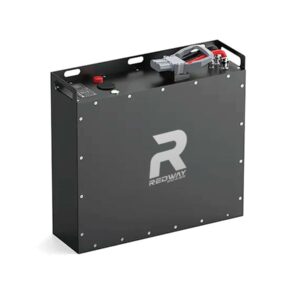How do I choose a forklift battery?
Choosing a forklift battery requires evaluating power needs, operational cycles, and cost-effectiveness. Lithium-ion batteries offer higher energy density, faster charging (1–2 hours), and longer lifespan (3–5× lead-acid) but cost 2–3× more upfront. Lead-acid suits low-duty cycles with lower initial costs. Match voltage (24V/48V/80V) and capacity (Ah) to forklift specifications. Prioritize thermal management systems for lithium variants and verify compatibility with OEM controllers.
Optimal Forklift Battery Installation and Maintenance
What factors determine battery chemistry selection?
Lithium-ion vs. lead-acid hinges on usage intensity and budget. Lithium excels in high-throughput operations with 2,000–5,000 cycles vs. lead-acid’s 500–1,200. Pro Tip: Calculate total cost of ownership—lithium often breaks even within 2–3 years despite higher upfront costs.

Operational demands dictate chemistry choice. For multi-shift warehouses requiring rapid charging, lithium’s 80% charge in 1 hour outperforms lead-acid’s 8-hour downtime. Conversely, sporadic-use scenarios (e.g., seasonal warehouses) may favor lead-acid’s lower capital cost. Consider environmental factors: lithium operates efficiently in -20°C to 60°C, while lead-acid loses 30–40% capacity below 0°C. A real-world example: A 48V 600Ah lithium pack powers 8-hour shifts with 30-minute midday top-ups, whereas lead-acid would need battery swaps. But how do you handle voltage spikes? Always pair lithium with a BMS featuring cell balancing and overvoltage cutoffs.
| Parameter | Lithium-ion | Lead-acid |
|---|---|---|
| Cycle Life | 2,000–5,000 | 500–1,200 |
| Charge Time | 1–2 hrs | 8–10 hrs |
| Energy Density | 150–200 Wh/kg | 30–50 Wh/kg |
How to verify voltage and capacity compatibility?
Match battery specs to forklift motor and controller limits. A 48V system requires 24×2V lead-acid cells or 14×3.2V lithium modules. Undersized capacity causes voltage sag during peak loads.
Cross-check forklift nameplate data against battery specs. For instance, a 3-ton forklift typically needs 80V 700–800Ah for full-shift operation. Use this formula: Required Energy (kWh) = Voltage × Capacity × 0.8 (depth of discharge). A 48V 600Ah lithium battery provides 48×600×0.8 = 23 kWh, sufficient for 6–8 hours of medium-intensity lifting. Pro Tip: Oversize capacity by 15–20% to account for aging—lithium retains 80% capacity after 2,000 cycles vs. lead-acid’s 50% after 800 cycles. What if your charger isn’t compatible? Modern lithium chargers adjust current based on battery temperature and SOC, unlike lead-acid’s fixed-voltage approach.
| Forklift Class | Typical Voltage | Capacity Range |
|---|---|---|
| 1–2 ton | 24V–48V | 300–500Ah |
| 3–5 ton | 80V–96V | 600–800Ah |
Why is thermal management critical for lithium batteries?
Temperature extremes degrade performance and safety. Lithium cells require active cooling/heating to maintain 15°C–35°C. BMS with NTC sensors prevents thermal runaway during fast charging.
Lithium batteries generate heat during 2C–3C charging (e.g., 600A current for 300Ah battery). Without liquid cooling or forced air, cell temperatures can spike beyond 60°C, accelerating degradation. Pro Tip: Opt for batteries with IP54-rated enclosures and integrated fans in dusty environments. In cold storage (-10°C), self-heating lithium packs use internal resistors to warm cells before discharging. For example, a -20°C warehouse would reduce lead-acid capacity by 40%, while heated lithium maintains 95% output. But what about venting? Unlike lead-acid, sealed lithium systems eliminate hydrogen gas risks, enabling indoor use without ventilation upgrades.
Battery Expert Insight
Key Considerations for Heavy-Duty Forklift Batteries
FAQs
Can I retrofit lead-acid forklifts with lithium batteries?
Yes, but upgrade charging infrastructure and controllers. Lithium requires CC-CV charging profiles, and existing lead-acid chargers may lack voltage precision (±0.5% vs. ±5%).
How often should lithium forklift batteries be maintained?
Quarterly inspections suffice—check terminal torque (8–12 Nm) and BMS logs. No watering or equalization needed, unlike lead-acid’s weekly maintenance.
